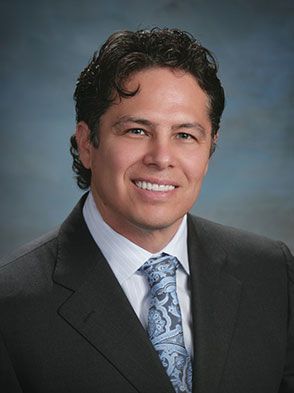Frequently Asked Questions
How do I select a Plastic surgeon?
Make sure you look at the credentials of the plastic surgeon. A board certified Plastic Surgeon, boarded by the American Board of Plastic Surgery, has done a residency for 7-8 years in an accredited plastic surgery program after finishing medical school. Board certified plastic surgeons do the same number of years in residency as Neurosurgeons and Cardiothoracic Surgeons.
Is Dr. Robles Board certified?
Yes. Dr. Robles did his Plastic Surgery residency at Duke University Medical Center and is Board Certified by the American Board of Plastic Surgery.
Am I a good candidate for plastic surgery?
Everybody is a good candidate as long as they have realistic expectations of their results. Very few medical conditions will prevent patients from having plastic surgery. As long as the Plastic Surgeon is aware of the medical conditions and appropriately addresses them before the surgery, most patients will recover without complications.
Do I have to pay for a consultation?
Dr. Robles does complimentary consultations. He believes that every patient considering plastic surgery should be able to be evaluated and educated without having to pay for it. Dr. Robles takes the opportunity during the consultation to educate and answer all of the patients questions, which ensures patients proceed with surgery with excitement knowing what to expect before, during and after their procedure.
How much does plastic surgery cost? Will my insurance cover the procedure?
The cost of plastic surgery varies depending on the procedures and the needs of each person. Usually insurance companies do not cover elective plastic surgery procedures, with the exception of some cases as may be reconstructive plastic surgery after breast cancer.
Is the surgery performed in an accredited surgical facility?
Yes. Dr. Robles does his surgeries in a facility accredited by the State of Arizona. Dr. Robles wants his patients to be safe throughout the surgery and this can only occur in a facility that has all the monitors and personnel to achieve this.
Is the surgery done under local or general anesthesia?
The risks of performing plastic surgery procedures under local anesthesia is very high. Local anesthesia medication has lidocaine and epinephrine which can cause the heart rate to increase and potentially cause the heart to go into a fatal heart rate. Also, local anesthesia can not fully numb up the area where the surgery is done, so patients will feel pain during the surgery.
The safest way to perform plastic surgery procedures is with general anesthesia. The medications used during general anesthesia are very safe and are removed from your body very fast. So, the after effects of general anesthesia are very short. Also, Dr. Robles uses a precise surgical technique during all of his surgeries, which ensures less general anesthesia will be used during the surgeries. This allows patients a rapid recovery.
Who performs the general anesthesia?
An M.D. Anesthesiologist, with over 30 years experience performs the general anesthesia.
Does Dr. Robles use pain pumps after the surgery?
No. Dr. Robles uses precise surgical technique in all of his surgeries and does not use any blunt dissection. When blunt surgical technique is used during the surgery, pain pumps are needed.
When do I see Dr. Robles for a follow up after the surgery?
Dr. Robles sees all of his patients on their follow up visit which is between 1 and 7 days after the surgery. Dr. Robles wants his patients to have an exceptional experience throughout the recovery process, he ensures this by making sure he is the only one that evaluates his patients after the surgeries.
Does Dr. Robles have any malpractice claims against him?
No, Dr. Robles has been performing plastic surgeries for over 16 years and is proud to have no malpractice claims against him. Visit www.azmd.gov to see Dr. Robles record.
Breast Procedure FAQs
What should I expect at my breast augmentation consult?
You will meet Dr. Robles at your consultation, not a physician assistant or nurse. Dr. Robles wants your initial consultation to be a relaxing, informative consultation. He will spend the time to listen to your needs. He then will make recommendations based on sound plastic surgical principles to ensure you have a rapid recovery with long term beautiful results.
How is breast implant size determined?
Dr. Robles will ask you what cup size YOU desire. He will then use a scientific based measurement approach to recommend a breast implant size that you will be satisfied with, while making sure you will not have a cup size that is too small or too big. Dr. Robles will then use a Tailored Breast Implant sizing method to have you actually see how your breasts will look in clothes and a bikini. The Tailored Breast Implant sizing method is only available at Robles Plastic Surgery.
Which breast implants are better saline or silicone gel implants?
Both saline implants and silicone gel implants will give patients a nice full volume breast. However, silicone gel implants will feel more natural and have minimal to no rippling in the long run, where saline implants tend to ripple within the first 5 years and feel less natural.
Do silicone gel implants cause diseases?
No. Silicone gel implants do not cause breast cancer or other connective tissue or autoimmune diseases.
What is the difference between over the muscle and under the muscle?
Under the muscle is when the implant is placed behind the breast gland and the pectorals major muscle. Over the muscle is when the implant is placed only behind the breast gland.
What are the different incisions for a breast augmentation?
- Inframammary incision - The most common incision type with less chance of losing nipple sensation. Rapid recovery is possible and this technique is less likely to injure breast gland. It also offers better position of the implant.
- Periareolar incision - With this incision, there is a greater likelihood of losing nipple sensation, injury to breast gland and breast ducts.
- Axilla incision – With this incision, patients have the inability to move their arms right away. However, it is more likely for an implant to go into the armpit and ride high on the breast.
- Umbilical incision - This incision is not on the breast, making it more likely for an implant to be in the incorrect position.
How long is my recovery?
The first 72 hours you will be in some discomfort, described as “pressure” by most patients. However, most of Dr. Robles’ patients will recover in 24 hours, due to the surgical technique that is used and the immediate postoperative exercises that are performed. Read, the 24 hour recovery Breast Augmentation download.
Will I be able to breast feed after a breast augmentation?
Yes. The behind the breast gland, giving it the full capacity to lactate.
Will I lose nipple sensation?
Temporary decrease or hypersensitivity in nipple sensation may occur while the implant settles into place.
Do I need to remove my implants at 10 years?
No. It is a myth that implants need to be removed at 10 years. The implants will not spontaneously dissolve or rupture at 10 years. As long as the implants remain soft, are not causing any pain, and the size is still adequate, it is not necessary to remove the implants.
Do I need a pain pump after a breast augmentation?
No. It is not necessary when a precise surgical technique is used with no blunt trauma to the muscle, ribs or tissue.
When can I return to exercise after a breast augmentation?
Most patients may begin exercising one week after the surgery.
Do I need a special bra after a breast augmentation?
No special bra is needed. A sports bra may be used for the first month for comfort, which occurs from the pressure of a sports bra.
Do I need to massage my breasts after a breast augmentation?
No special massages are necessary. Immediate motion of the arms within the first 24 hours after surgery will help minimize capsular contracture.
How long will it take for my breasts to look good after a breast augmentation?
The upper part of the breast will look full for the first 4-6 weeks. Breast will look round and in a normal shape about 4-6 weeks after surgery.





